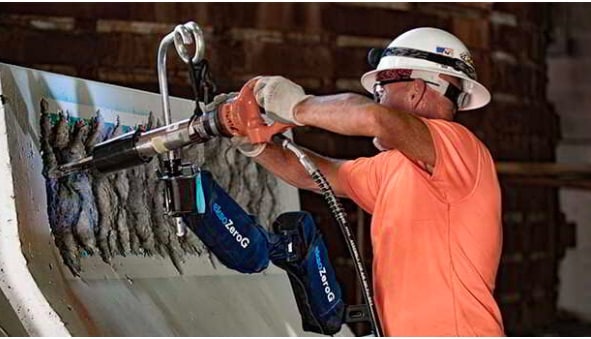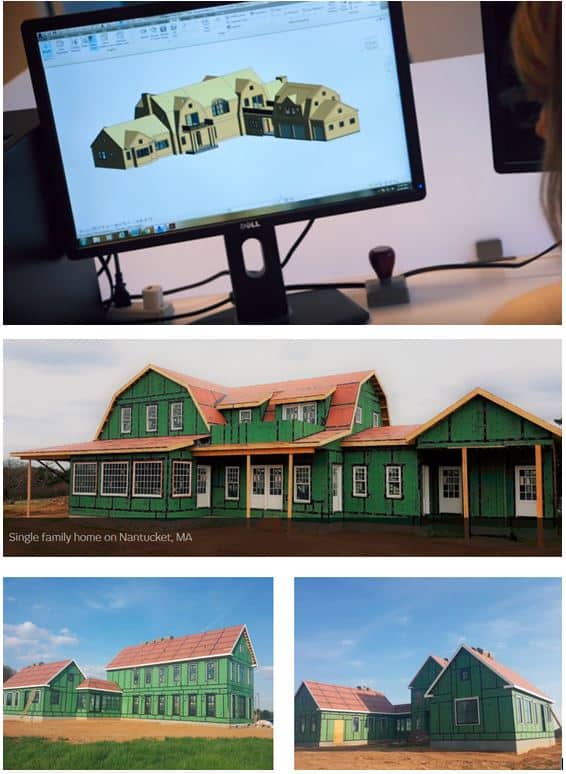8 Startups Building Robotic Construction Workers
Table of contents

The construction industry sits at an interesting crossroads in 2017. One of the highest-grossing in the world – $10 trillion in 2016 – it is also one of the last industries to innovate technologically and one most desperately in need of doing so. Add on the fact that it’s the most dangerous in terms of workplace fatalities – 924 cases in 2015, the highest level since 2008 – *and* that it is now facing a shortage of skilled labor, and you have an industry that needs innovation and new thinking in pretty much every aspect.
The answer to almost all of these problems lies, of course, in our future robot overlords. Though the immediate reaction to autonomous equipment in construction is sometimes one of disdain – what about the jobs you’re replacing? – further examination sheds new light on the many benefits. Not to mention the fact that all of these automatons need humans in order to operate effectively.
It’s not hard to imagine a future where a building is constructed entirely in a digital world which people explore in virtual reality. Once everyone likes what they see, someone pushes a “build” button and the robot construction workers are dispatched to an empty plot of land (on Mr. Musk’s autonomous trucks of course) where they do what human construction workers do today when they arrive at a new site – smoke some weed, tell off-color jokes, and put in an honest day’s work like real men do. (Did you know that in Australia, the industry with the least amount of female representation is construction at 88.3% male? In the USA, women in construction are even fewer. So until we have equality, this one’s for all the lads out there pounding nails and breakin ’em.)
Let’s take a look at 8 startups developing cool futuristic toys like exoskeletons, mapping drones, and self-driving earthmovers that will propel the construction industry into the future.
Bionic Arms

If you want to see one of these bionic arms go up against a human in a head-to-head showdown, take 60 seconds to watch this clip.
Taking Stock with Drones
You won’t see many construction workers flying around a job site today unless you drop a few hits of Purple Jesus, but all signs point to drones being a staple on construction sites of the future. Since drones are really just flying robots, we decided to include one example from among many that can be found in the drone mapping space. Silicon Valley-based Kespry was founded in 2013 and has $28.3 million in funding so far to develop their drone technology which they refer to as an “aerial intelligence platform”. Kespry offers a complete solution for surveying, mapping, and analyzing large-scale work sites such as quarries, construction material sites, and mining operations. Providing hardware, software, and cloud services, Kespry offers one simple, automated solution from start to finish.

Site managers create a mission on a supplied iPad, a drone calculates the flight path and flies autonomously, data is transferred and processed wirelessly, and the resulting report is delivered within minutes. The company has already established a sizable customer list including Whitaker Contracting who had a previously two-day measuring project shrink down to 10 minutes.
Earthmoving Robots

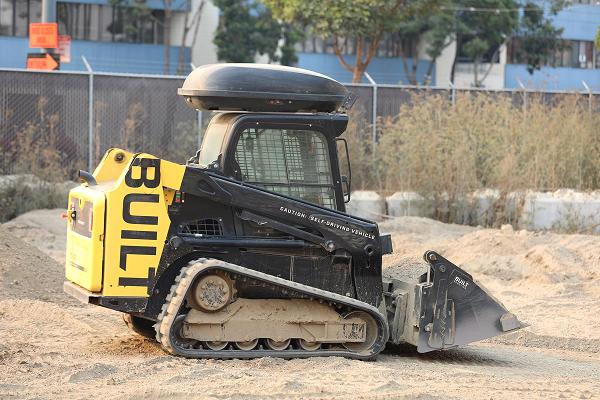
Using software designed specifically for construction and earthmoving, Built allows operators to program coordinates, then stand off to the side and let the machines do the rest. The company even specially designed LIDAR (Light Detection and Ranging) and GPS sensors that can withstand the intense vibrations of excavation. Despite (or maybe because of) its youth, Built Robotics has already established itself at the cutting edge of autonomous construction innovation. Our next company may have something to say about that.
Update 09/23/2019: Built Robotics has raised $33 million in Series B funding to scale their fleet of autonomous robots and expand into new construction verticals. This brings the company’s total funding to $48 million to date.

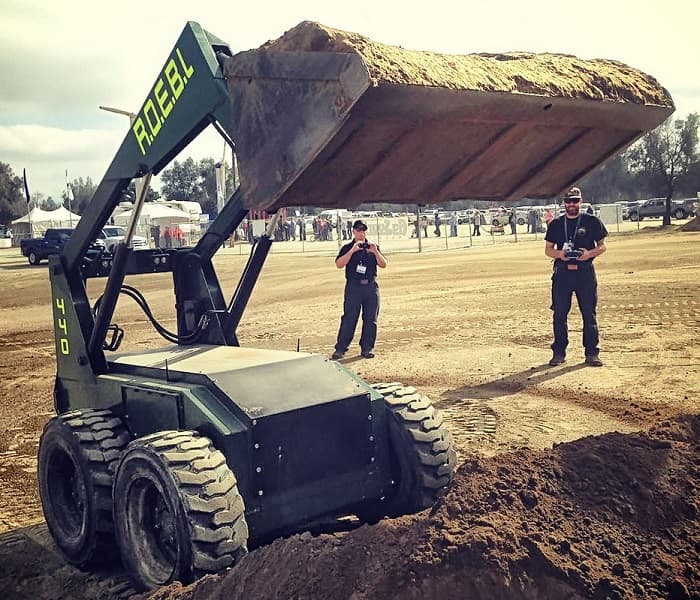
Breathe easy boys, your job is safe for now.
Raising a Building in Two Days


The first step in its eventual “digital construction system”, Hadrian X can construct the walls of an average-sized building in two days. The very-fun-to-watch video of Hadrian in action makes it easy to see why the company is so bullish about its future. What’s more, behemoth Caterpillar has invested $2 million in Fastbrick and the Kingdom of Saudi Arabia has signed a memorandum of understanding to build a minimum of 50,000 homes by 2022. If you want to learn more about robots laying bricks, we’ve got you covered with our article on Robot Brickmasons and a Robotic Bricklaying Stock.
Two Thousand Square Feet in One Day
Cazza was founded in 2016 (sensing a trend here?) in San Francisco and has $2 million in total funding. Specializing in 3D printing technologies for construction companies, Cazza’s ‘minitanks’ are 3D printing cranes that can lay just over 2,000 square feet of concrete each day. The Cazza machines are mobile and remotely operated and, once delivered to a worksite and hooked up to a concrete supply, are ready to print within 30 minutes. They can even be programmed beforehand to pause for electrical wiring and plumbing to be installed.
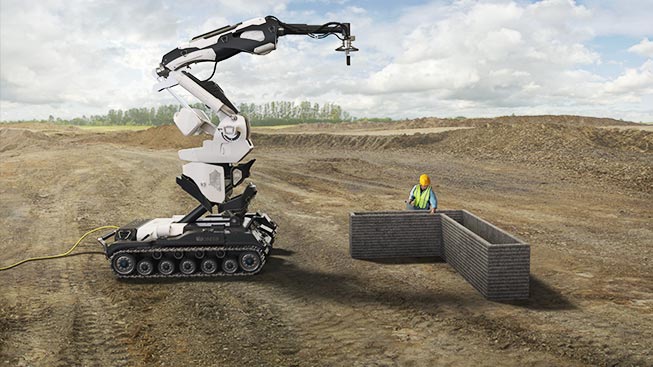
The company recently announced that its machines will build the world’s first 3D-printed skyscraper in the United Arab Emirates. If you’re more into building with wood, then you’ll want to check out this next startup.
Robotic Carpenters

It all ships on a standard flatbed truck, just like the ones Mr. Musk is building. As of now, they have a team of humans that will assemble all the pieces for you on site. All you need to do is finish the roofing and then paint the walls. That’s where our next startup comes into play.
Paint Walls 30X Faster

Reusable Architecture

Conclusion
A study by McKinsey earlier this year found construction to be one of the most stagnant industries in the world, with productivity growing just 1 percent a year over the past two decades. When its growth rate catches up with that of the total economy – an eventuality analysts feel sure of – an estimated $1.6 trillion will be added to its value. That’s a chunk of potential change hard to ignore and, judging by the number of companies popping up to have a stake in it, the robot-ization of construction has begun in earnest.
Sign up to our newsletter to get more of our great research delivered straight to your inbox!
Nanalyze Weekly includes useful insights written by our team of underpaid MBAs, research on new disruptive technology stocks flying under the radar, and summaries of our recent research. Always 100% free.







